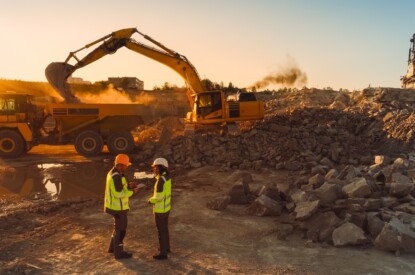Change is coming faster than ever. Every week, I search for the meaning of some new acronym that impacts our business processes. As someone who oversees not only HORNE’s web properties, but also those of clients, I had to research these changes Google has made. Here are my key takeaways.
First, it may be helpful to set the stage. In the past, Google search worked by providing websites based on users’ queries. Sites at the top of the results are ones that have proven successful at providing answers to meet the search criteria.
These sites earned their higher ranking through Search Engine Optimization keywords, metatags and backlinks. For example, let’s say Site A sells Wonderful Widgets, provides helpful information on the product and has a great customer service rating. And Site B’s content is about the best Widgets you can buy. Site B would put some content about Wonderful Widgets on their site but would then link, or backlink, to Site A for more details.
This sets up Site A as a high-ranking one that appears near the top of searches for Widgets. Their domain authority is rewarded. A site with good backlinks and high-value content will outrank its competition in search results.
The problem with this algorithm resulted when SEO practitioners gamed the system by establishing a large volume of backlinks and using AI to autogenerate content. This often resulted in a poor user experience, something Google wants to avoid.
Google’s Helpful Content Update
To improve user experience, Google began its Helpful Content Update in September. This new algorithm prioritizes original content. Google has adopted a new, automated classifier process that uses a machine-learning model. So, what does that mean for your business?
- Don’t wait to get started. Google is reevaluating sites now. It has what it calls a site-wide signal that identifies content that appears to have little or low-added value. Companies already are seeing drops in their domain authority and keyword rankings under this new algorithm.
- Out with the bad. Google’s new signal is weighted. Websites with unhelpful content could see a more significant impact. To avoid your site being dinged, remove content that doesn’t help users. Google has created guidelines to help your efforts.
- In with the good. Reevaluate your SEO and content strategy by prioritizing people-first content. This means writing for the user, not the search engines. Your content needs to prove expertise and leave people feeling satisfied after reading.
- Monitor and adjust. Pay attention to your website metrics and focus on regularly reviewing and tweaking content. Ignoring or delaying adjustments will result in an impact on your business.
Ultimately this update is a positive. It rewards genuine content. Those who work to deliver people-centric content will thrive. It allows companies to focus on delivering valuable and useful information instead of spending their time finding ways to artificially elevate their sites. It’s a win for Google, but a bigger win for users.

Stacey Gaines is the Marketing Director at HORNE. She leads HORNE’s external branding, messaging, advertising and digital strategy initiatives. In addition, Stacey helps HORNE’s clients achieve growth by providing creative, strategic marketing solutions. Stacey joined the firm in 2016 and has more than 30 years of experience in marketing and graphic design.






